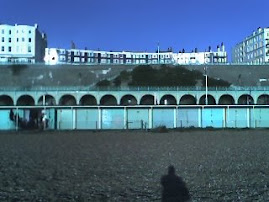copied using OCR -- no typing!! -- from Oxford Book of Wild Flowers
next stage: find the pictures....
SALT-MARSH AND SEASHORE
The plants growing in these habitats must be able to tolerate a salty soil, either the waterlogged soil of the salt-marsh, or the dry, sandy, often shifting soil of the seashore.
1. Salt-marsh. This is a quite distinct type of marsh, most often found round river estuaries. The amount of salt in the soil depends on the frequency with which tidal flooding occurs. The plants to be found are all species which cannot flourish except in a salty soil. They include Rock Samphire (p. 47), Glasswort, Sea Purslane, and Seablite (p. 57), Sea Aster and Sea Lavender (p. 137). Any of these may cover large areas, depending on the amount of silt present and the height above the low-tide level. There may also be found scattered plants of
Sea Wormwood (p. 61), Scurvy-grass (p. 69), Sea Arrowgrass (p. 103), Sea Heath and Sea Spurrey (p. ll3), and Sea Milkwort (p. 125).
2. Seashore. On shifting sand the commonest plant is Marram Grass, which is deep-rooting and can rapidly bind the sand.
On more stable sand wetted by spray, Saltwort (p. 57), Sea Rocket (p. 69), and Sea Holly (p. 179) will grow. Further from the sea there is a larger variety, including perennials such as Yellow Stonecrop (p. 15), the Ragworts ( ' p. 43), Hound's-tongue (p. 105), and Creeping Thistle (p. 153). There are also certain annuals which grow and flower early before the soil has dried out. Among these are Whitlow Grass (p. 71), Mouse-ear Chickweeds (p. 75), and Rue-leaved Saxifrage (p. 84).
Shingle beaches are as a rule too exposed and liable to shifting to make it possible for any plants to grow. There are, however, a few special plants of shingly places, such as Yellow Horned Poppy (p. 7), Wild Beet (p. 57), Sea Campion (p. 73), and Sea Pea (p. 135). These plants are perennials, have deep roots, and for the most part are low-growing.
Some plants, though not sea-coast plants, are only to be found within a few miles of the sea. The reason for this preference is not known. Examples are Alexanders and Fennel (p. 47) and Slender Thistle (p. I51).








